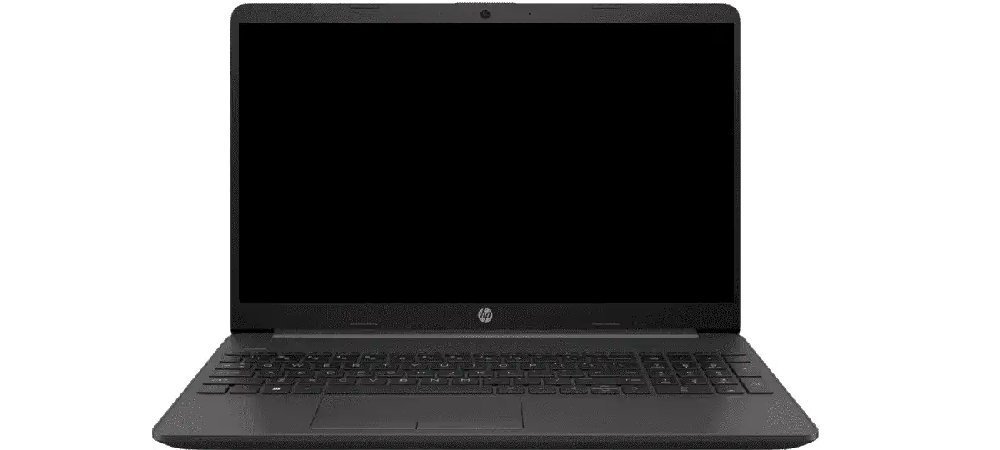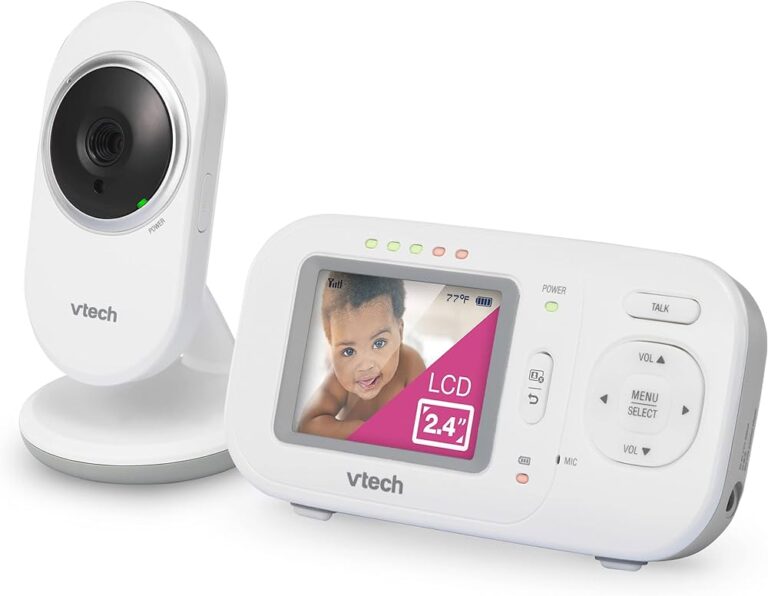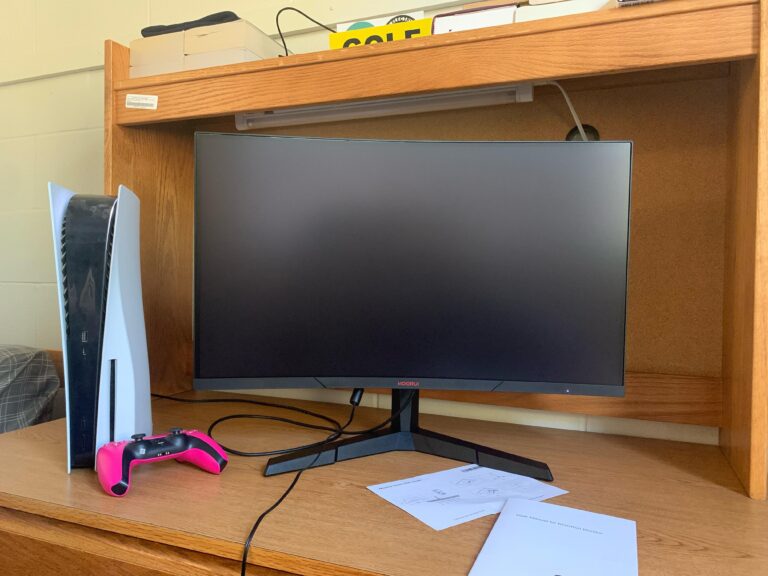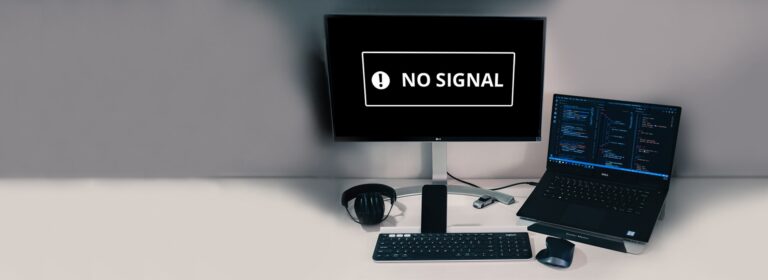Why is My Screen Not Full Size on Monitor: Troubleshooting and Solutions
If your screen is not full size on your monitor, it may be due to the disabled or overridden full-screen mode. To rectify this issue, access the settings of the target application or dedicated graphics card controller and enable full-screen mode.
For TV monitors, try disabling the Overscan feature.
“why Is My Screen Not Full Size On Monitor”: Initial Checks
If you’re experiencing the frustrating issue of a screen not displaying at full size on your monitor, there are a few initial checks you can perform to troubleshoot and potentially solve the problem. By verifying if the issue is consistent across all programs, conducting a quick assessment of video cables and connections, and reviewing display settings in the operating system, you can pinpoint the root cause and take appropriate actions.
Verify If The Issue Is Consistent Across All Programs
The first step in diagnosing the screen size problem is to verify if the issue persists across all programs on your computer. Open various applications and check if the screen size remains limited. If the undersized screen occurs across all programs, then it is likely a system-wide issue, rather than specific to a single program.
Quick Assessment Of Video Cables And Connections
The next step is to ensure that the video cables and connections between your computer and monitor are properly connected and functioning. Check the cable connections at both ends, ensuring they are securely plugged in. Additionally, assess the condition of the cables for any signs of damage or wear. Faulty cables or loose connections can result in a reduced screen size.
Overview Of Display Settings In The Operating System
Now it’s time to review the display settings in your operating system. Access the display settings menu by right-clicking on your desktop and selecting “Display settings.” In this menu, you will find options related to screen resolution, scaling, and layout. It’s important to ensure that the resolution is set to the recommended value for your monitor. You can adjust the screen size by dragging the slider or selecting the “Recommended” button for optimal settings.
Furthermore, make sure that any specific settings for scaling or layout, such as “Overscan,” are configured appropriately. Overscan is a common issue when using a TV as a monitor, and disabling it can resolve the undersized screen problem.
By performing these initial checks, you are on the right track to identify the cause of your screen not being displayed at full size on your monitor. If none of these steps solve the issue, it may be necessary to delve deeper into advanced troubleshooting methods or seek professional assistance.

Credit: www.amazon.com
Diagnosing Display Configuration
If your screen is not full size on your monitor, it could be due to disabling or overriding full-screen mode. To fix this issue, navigate to the settings of the relevant application or graphics card controller and enable full-screen mode.
Additionally, if you are using a TV as your monitor, you may need to turn off the Overscan feature.
Understanding Resolution And Its Impact On Screen Size
Resolution plays a crucial role in determining the size of your screen on a monitor. The resolution refers to the number of pixels that can be displayed horizontally and vertically on a screen. A higher resolution means more pixels and therefore a larger screen size.
When your screen is not full size, it could be due to a mismatch between the resolution settings on your computer and the native resolution of your monitor. You can check and adjust the resolution settings to ensure they are compatible with your monitor.
- Right-click on your desktop and select “Display settings”.
- Scroll down to the “Resolution” section.
- Choose a resolution that matches the native resolution of your monitor.
- Click “Apply” to save the changes.
By selecting the correct resolution, you can ensure that your screen is displayed in full size on your monitor.
Assessing Aspect Ratio Settings For Discrepancies
Another factor that can affect the screen size on your monitor is the aspect ratio settings. Aspect ratio refers to the proportional relationship between the width and height of the screen. Common aspect ratios include 16:9, 16:10, and 4:3.
If your screen is not full size, it is possible that the aspect ratio settings are not set correctly. This can lead to black bars on the sides or top and bottom of the screen.
To check and adjust the aspect ratio settings, follow these steps:
- Right-click on your desktop and select “Display settings”.
- Scroll down to the “Resolution” section.
- Click on “Advanced display settings”.
- Under “Advanced display settings”, click on “Display adapter properties”.
- In the “Adapter” tab, click on “List All Modes”.
- Select a resolution with the correct aspect ratio for your monitor.
- Click “OK” to save the changes.
By ensuring that the aspect ratio settings are correct, you can fix the screen not full size issue on your monitor.
The Role Of Graphics Card Drivers In Display Issues
In some cases, display issues such as the screen not being full size can be attributed to problems with the graphics card drivers. Graphics card drivers are software components that enable communication between the graphics card and the operating system.
If your graphics card driver is missing or outdated, it can lead to compatibility issues with your monitor and result in display problems. To address this, you need to ensure that your graphics card drivers are up to date.
To update your graphics card drivers, follow these steps:
- Right-click on the “Start” button and select “Device Manager”.
- Expand the “Display adapters” category.
- Right-click on your graphics card and select “Update driver”.
- Choose the option to search automatically for updated driver software.
- Follow the on-screen instructions to complete the driver update process.
Updating your graphics card drivers can help resolve display issues and ensure that your screen is full size on your monitor.
Monitor Settings Exploration
When it comes to troubleshooting screen size issues on your monitor, it’s important to explore the various settings that can affect the display. By delving into the on-screen display (OSD) menu and adjusting hardware-based options, you can often find a solution to the problem. Additionally, checking for monitor-specific ‘auto-adjust’ features can ensure that your screen fills up the entire monitor, providing a seamless viewing experience. Let’s dive into each of these aspects and understand how they can help you resolve the issue.
Exploring The On-screen Display (osd) Menu Of The Monitor
The on-screen display (OSD) menu is a control panel within your monitor that allows you to make adjustments to various settings. Here’s how you can access it:
- Press the OSD button on your monitor. This button is usually located on the front or side of the screen.
- A menu will appear on the screen, allowing you to navigate and modify different options.
- Look for settings related to screen size and position. These options may be under a ‘Display’ or ‘Image’ section.
- Adjust the settings according to your preference. You can usually use the arrow buttons on your monitor to navigate and make changes.
- Once you are satisfied with the adjustments, exit the OSD menu.
Adjusting Hardware-based Screen Size And Position Options
In addition to the OSD menu, some monitors have physical buttons or knobs that can directly adjust the screen size and position. Here’s how you can utilize these hardware-based options:
- Inspect your monitor for any buttons or knobs labeled ‘Size’, ‘Position’, or ‘Auto’.
- If you find these controls, use them to expand or shrink the screen size and adjust its position on the monitor.
- Experiment with different settings until you achieve the desired full screen display.
- Remember to refer to your monitor’s user manual for specific instructions on using these hardware-based options.
Checking For Monitor-specific ‘auto-adjust’ Features
Some monitors come with an ‘auto-adjust’ feature that can automatically optimize the screen size and position based on the input signal. To ensure you are utilizing this functionality:
- Access the OSD menu or look for a dedicated button labeled ‘Auto’ on your monitor.
- Select the ‘Auto’ option to initiate the automatic screen adjustment process.
- Wait for the monitor to analyze the input signal and make the necessary adjustments.
- Once the process is complete, check if the screen size has now filled up the entire monitor.
By exploring these monitor settings, you can effectively troubleshoot and resolve the issue of your screen not being full size. Remember to save any changes made and double-check your connections between the monitor and the computer to ensure a stable connection. With the proper adjustments, you can enjoy a full-screen experience on your monitor once again.
Software And Drivers Troubleshooting
To troubleshoot why your screen is not full size on your monitor, check if full-screen mode is disabled or overridden. Go to the settings of the application or graphics card controller (e. g. , NVADIA Control Panel) and enable full screen mode.
If you’re using a TV as your monitor, turn off the Overscan feature.
Updating And Reinstalling Graphics Card Drivers
If you’re experiencing a screen that is not full size on your monitor, it may be due to outdated or missing graphics card drivers. Graphics card drivers are an essential component for proper display settings, and outdated drivers can cause issues such as an undersized screen.
To resolve this problem, you can try updating or reinstalling your graphics card drivers:
- Open the Device Manager by pressing the Windows key + X and selecting “Device Manager.”
- Expand the “Display adapters” section.
- Right-click on your graphics card and select “Update driver.”
- Choose the option to automatically search for updated driver software. Windows will search online for the latest driver and install it.
If the automatic update doesn’t work, you can also visit the manufacturer’s website and download the latest driver for your graphics card model. Once downloaded, run the installer and follow the on-screen instructions to update your drivers.
Delving Into Dedicated Graphics Software Solutions
Aside from updating your graphics card drivers, you can also delve into dedicated graphics software solutions to address the screen size issue. These solutions are typically provided by the graphics card manufacturer and offer advanced settings and customization options.
To access the dedicated graphics software and adjust the screen size:
- Right-click on your desktop and select the dedicated graphics software option (e.g., “NVIDIA Control Panel” for NVIDIA graphics cards).
- Once the software opens, navigate to the display or resolution settings. Look for an option to adjust the screen size or scaling.
- Experiment with different settings until you find the one that fits your monitor’s full size.
- Apply the changes and check if the screen now fills the entire monitor.
Potentials Of Third-party Screen Management Applications
If the previous solutions didn’t solve the problem, you can explore third-party screen management applications. These applications offer additional features and customization options for managing your screen size.
- Search for reputable screen management applications online.
- Download and install the application that suits your needs.
- Launch the application and explore the various settings and options.
- Look for options related to screen size or scaling.
- Adjust the settings as needed to ensure your screen fills the entire monitor.
- Apply the changes, and your screen should now be in full size.
Remember to choose reliable and reputable third-party applications to ensure the safety and performance of your system.
Advanced Troubleshooting Techniques
If you’re wondering why your screen is not full size on your monitor, it could be due to disabling or overriding full-screen mode. Simply go to the settings of the target application or dedicated graphics card controller and turn on full-screen mode.
For TV monitors, you may need to turn off the Overscan feature.
Addressing Compatibility Issues With Legacy Software And Games
If you are experiencing a screen that is not full-sized while using legacy software or gaming applications, compatibility issues may be the culprit. Legacy software and older games were designed to run on older operating systems and may not be optimized for modern display resolutions. Fortunately, there are a few advanced troubleshooting techniques you can try to address this problem.
- Run the software or game in compatibility mode: Right-click on the application’s icon or shortcut, select “Properties,” and navigate to the “Compatibility” tab. From there, check the box that says “Run this program in compatibility mode for,” and select a compatible operating system from the dropdown menu. This may resolve any display issues caused by incompatibility.
- Adjust display settings within the software or game: Some software and games have built-in options to change the display resolution or aspect ratio. Look for these settings within the software or game’s preferences or options menu and try different configurations to find the one that fits your screen best.
- Install patches or updates: Developers often release patches or updates to address compatibility issues with newer systems or displays. Check the software or game’s official website or the developer’s support forums for any available updates and install them to see if they resolve the problem.
Custom Resolution Creation For Atypical Display Scenarios
If your screen is not full-sized due to an atypical display scenario, such as an ultra-wide or custom resolution monitor, creating a custom resolution may help solve the issue. Follow these steps to create a custom resolution:
- Access your graphics card control panel: Right-click on your desktop, and depending on your graphics card, select either “Graphics Options,” “Display Options,” or “NVIDIA Control Panel” for Nvidia graphics cards.
- In the control panel, navigate to the “Display” or “Resolution” section and look for an option to create a custom resolution.
- Click on the “Create” or “Add” button and enter the desired resolution values. Make sure to select the correct aspect ratio and refresh rate for your monitor.
- Save the custom resolution and apply the changes. Your screen should now fill the entire monitor.
Resolving Conflicts With Multi-monitor Setups And Display Scaling
If you are using multiple monitors or have configured display scaling, conflicts may arise that cause your screen to not be full-sized. Follow these steps to resolve such conflicts:
- Access the display settings: Right-click on your desktop and select “Display settings.”
- Scroll down to the “Scale and layout” section and check if the scaling is set to a value that could be causing the issue. Experiment with different scaling options to see if any of them resolve the problem.
- If you are using multiple monitors, ensure that the “Extend these displays” option is selected. This will allow the screen to fill the entire monitor when using multiple displays.
- Check the positioning of the monitors in the display settings. If they are not arranged correctly, drag and drop them to the correct positions.
By following these advanced troubleshooting techniques, you should be able to address the issue of your screen not being full-sized on your monitor. Remember to save any changes and restart your computer if necessary for the changes to take effect.
Frequently Asked Questions On Why Is My Screen Not Full Size On Monitor
How Do I Restore My Screen To Full Size?
To restore your screen to full size, right-click on your desktop and select “Display settings. ” Scroll down to “Scale and layout” and adjust the slider to your preferred size. You can also click “Recommended” for optimal settings. If using a TV as a monitor, turn off the Overscan feature.
Make sure your graphics card driver is updated.
How Do I Make My Screen Full Size On My Monitor?
To make your screen full size on your monitor, follow these steps: 1. Go to the settings of the target application or dedicated graphics card controller. 2. Look for the option to turn on full screen mode. 3. If you’re using a TV as your monitor, turn off the Overscan.
4. Adjust the screen resolution in your computer’s display settings. 5. Make sure your graphics card driver is up to date. Note: These steps may vary slightly depending on your specific setup.
How Do I Fix My Monitor Screen Size To Fit My Monitor?
To fix your monitor screen size, access the display settings by right-clicking on your desktop. Select “Display settings” and scroll down to the “Scale and layout” section. Drag the slider to adjust the size or click “Recommended” for optimal settings.
Why Is My Monitor Not Displaying Full Screen?
If your monitor is not displaying full screen, it might be due to disabling or overriding full-screen mode. To fix this, go to the settings of the application or graphics card controller (e. g. NVADIA Control Panel) and enable full-screen mode.
If you are using a TV as your monitor, you can try turning off the Overscan feature. Additionally, outdated or missing graphics card drivers can cause this issue. Resetting the screen size through display settings or adjusting the screen resolution can also help solve the problem.
Conclusion
To resolve the issue of your screen not being full size on your monitor, you can try enabling full-screen mode in the settings of your target application or dedicated graphics card controller. If you’re using a TV as your monitor, turning off the Overscan setting can also help.
Additionally, if your graphics card driver is missing or outdated, it could be the cause of the problem. Simply update or reinstall the driver to fix the issue. By following these steps, you can restore your screen to its full size and enjoy a seamless viewing experience.





